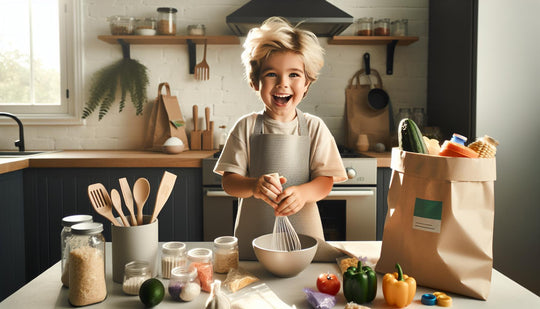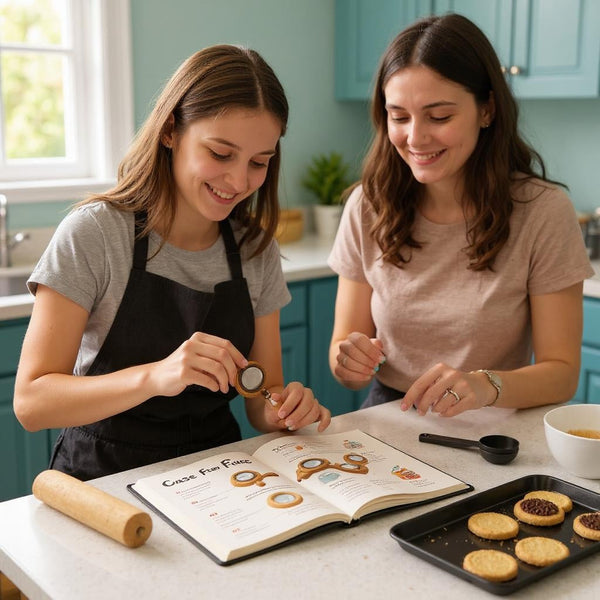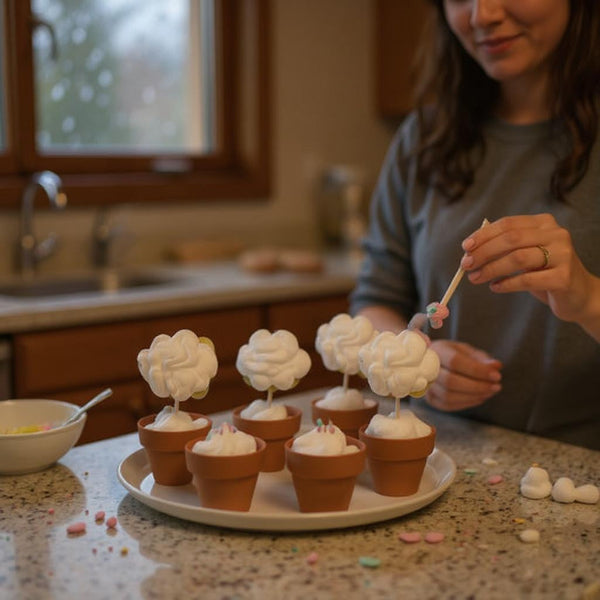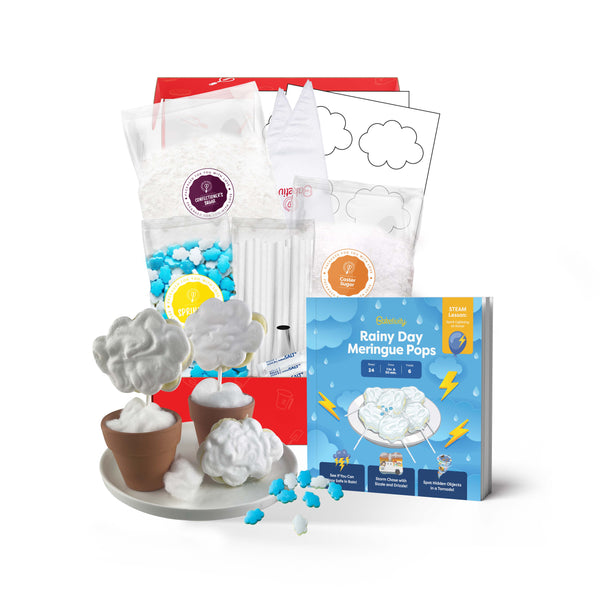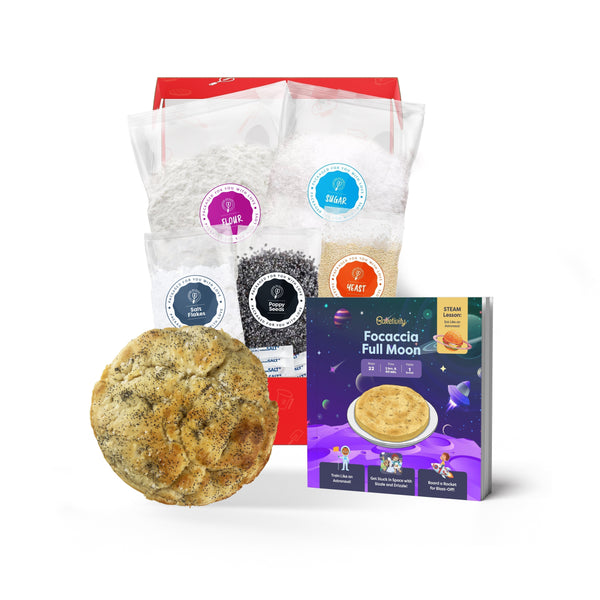We've all been there - trying to entertain our kids while also teaching them valuable life skills. Enter the sustainable packaging kids cooking box, a game-changer for families looking to blend fun, education, and eco-friendliness. These boxes are like little treasure chests of culinary adventure, packed with recipes and ingredients that'll have your little ones whipping up delicious meals in no time.
Key Takeaways
- Sustainable packaging kids cooking boxes combine eco-friendly materials with fun culinary adventures for children
- These kits offer educational value by teaching kids about cooking skills, sustainability, and reducing environmental impact
- Key features include recyclable materials, biodegradable components, and compostable packaging
- Top options like Eco-Chef Junior and Green Kitchen Explorers provide organic ingredients and innovative eco-friendly designs
- When choosing a kit, consider age-appropriateness, ingredient quality, recipe variety, and sustainability education components
What Is a Sustainable Packaging Kids Cooking Box?
A sustainable packaging kids cooking box is a fun-filled kit that combines eco-friendly materials with culinary adventures for children. Imagine a treasure chest of kitchen goodies that's not only exciting but also kind to Mother Earth! These boxes are packed with kid-friendly recipes, pre-measured ingredients, and cooking tools, all wrapped up in environmentally conscious packaging. Ever wondered how to turn your little ones into mini master chefs while teaching them about sustainability? These boxes are the answer! They're like a birthday present that keeps on giving, filled with tasty surprises and green packaging solutions. From recyclable containers to compostable wraps, every element is designed with the planet in mind. What makes these boxes truly special? They're a perfect blend of education and entertainment. Kids get to whip up delicious dishes while learning about the importance of reducing waste. It's like planting a seed of environmental awareness in their young minds, all while they're having a blast in the kitchen. Have you ever seen a child's face light up when they create something all by themselves? That's the magic these cooking boxes bring to the table. They empower kids to take charge in the kitchen, fostering independence and creativity. And the best part? They're doing it all with materials that won't harm the environment. Let's not forget the giggles and messy moments that come with cooking. Picture this: your little chef trying to crack an egg for the first time, only to end up with more shell than yolk in the bowl. These boxes create memories that'll last a lifetime, all while teaching valuable lessons about sustainability.Benefits of Sustainable Packaging for Kids' Cooking Kits
 Sustainable packaging for kids' cooking kits offers numerous advantages for both children and the environment. These eco-friendly boxes combine fun culinary experiences with important lessons about sustainability.
Sustainable packaging for kids' cooking kits offers numerous advantages for both children and the environment. These eco-friendly boxes combine fun culinary experiences with important lessons about sustainability.
Environmental Impact
Sustainable packaging reduces waste and promotes eco-conscious habits. By using materials like recycled cardboard, biodegradable plastics, and compostable wraps, these kits minimize their carbon footprint. Kids learn firsthand about recycling and composting as they unbox their cooking supplies. Remember when we used to toss everything in the trash without a second thought? Now, we're teaching the next generation to be Earth's superheroes! Imagine little chefs saving the planet one recipe at a time. It's like they're whipping up a big batch of "Save the Earth Soup" – and the secret ingredient is sustainable packaging! What creative ways can you think of to reuse packaging materials from cooking kits? Maybe turn that cardboard box into a mini greenhouse for herbs?Educational Value
These kits do double duty as both culinary adventures and eco-lessons. As kids measure ingredients and follow recipes, they're also absorbing information about sustainable practices. The packaging often includes fun facts about recycling or tips for reducing food waste. We're not just teaching kids to cook – we're preparing them to be eco-warriors in the kitchen! It's like a secret mission: "Operation Green Chef." Our young agents learn to crack the code of sustainability while they crack eggs for their omelets. Ever tried explaining composting to a 7-year-old? It's hilarious! One kid thought we were making "worm soup" when we talked about vermicomposting. Hey, at least they're learning, right? How do you think sustainable packaging in cooking kits can inspire kids to make eco-friendly choices in other areas of their lives?Key Features of Eco-Friendly Cooking Boxes for Children
 Eco-friendly cooking boxes for kids combine fun and sustainability. These kits offer exciting features that make cooking adventures both enjoyable and environmentally responsible.
Eco-friendly cooking boxes for kids combine fun and sustainability. These kits offer exciting features that make cooking adventures both enjoyable and environmentally responsible.
Recyclable Materials
Our sustainable cooking boxes use recyclable materials throughout. We've swapped plastic for paper and cardboard wherever possible. Recipe cards come printed on recycled paper, while ingredient containers are made from recyclable plastics or glass. Kids love the colorful packaging, but did you know it's all recyclable? It's like magic - today's box becomes tomorrow's new product! Ever tried explaining the recycling process to a curious 7-year-old? Be prepared for some hilarious questions about where exactly the recycling truck takes their empty tomato sauce jar!Biodegradable Components
We've packed these boxes with biodegradable goodies. From corn-based utensils to plant-based packaging peanuts, everything breaks down naturally. Even the ingredient bags are compostable!How to Choose the Right Sustainable Cooking Kit for Your Child
Selecting the perfect eco-friendly cooking kit for your little chef can feel like finding a needle in a haystack. But don't worry, we've got your back! Let's dive into the key factors to consider when picking out that dream sustainable cooking box.Age-Appropriate Content and Tools
Kids' cooking skills vary like flavors in a spice rack. A 5-year-old might struggle with a vegetable peeler, while a 10-year-old could be ready for more advanced techniques. Look for kits that match your child's age and abilities. Remember, we want to challenge them, not frustrate them!Eco-Friendly Materials
The whole point of sustainable cooking kits is to be kind to our planet. Check for boxes made from recycled cardboard or other earth-friendly materials. Bonus points if the packaging doubles as a fun craft project! Who wouldn't want to turn their cooking box into a superhero mask?Ingredient Quality and Sourcing
Organic, locally-sourced ingredients are the cream of the crop. They're not only healthier but also teach kids about supporting local farmers. Plus, imagine the giggles when your child discovers that carrots actually grow in the ground!Recipe Variety and Difficulty
A mix of easy and slightly challenging recipes keeps things exciting. Look for kits that offer a range of cuisines and cooking methods. One day, your kiddo might be whipping up a simple smoothie, and the next, they're tackling a mini quiche. Variety is the spice of life, after all!Educational Value
The best kits sneak in learning opportunities like veggies in a smoothie. Look for boxes that teach about nutrition, food origins, or even basic math through measuring. Who knew fractions could be so tasty?Safety Features
Safety first, budding chefs! Opt for kits with child-friendly tools and clear safety instructions. No one wants a cookie-baking session to turn into an impromptu first-aid lesson.Sustainability Education
Choose kits that go beyond just eco-friendly packaging. The best ones teach kids about composting, reducing food waste, and making environmentally conscious choices. It's like planting seeds of sustainability in their young minds!Tips for Maximizing the Use of Sustainable Packaging
Let's dive into some practical ways to get the most out of your sustainable packaging kids cooking box. Think of it as a treasure chest filled with eco-friendly goodies – how can we make sure every piece serves its purpose?- Reuse and repurpose
- Transform packaging into storage containers
- Create art projects from leftover materials
- Use empty boxes as planters for herbs
- Compost with care
- Identify compostable items in the kit
- Start a mini compost bin with your kids
- Turn it into a fun science experiment
- Recycle responsibly
- Teach kids to sort recyclables
- Make a recycling game with different bins
- Challenge them to find creative ways to recycle
- Upcycle creatively
- Design new kitchen tools from packaging
- Create themed decorations for future cooking sessions
- Invent eco-friendly toys using leftover materials
- Extend the life of ingredients
- Store leftovers properly to reduce food waste
- Plan meals around remaining ingredients
- Freeze extras for future use
